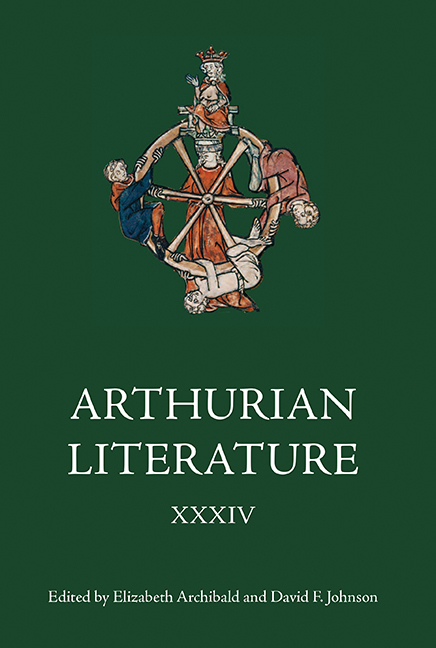Book contents
- Frontmatter
- Contents
- List of Illustrations
- General Editors’ Foreword
- List of Contributors
- I Illusory Ends in Chrétien de Troyes’ Erec et Enide
- II Who is the Traitor at the Beginning of Sir Gawain and the Green Knight?
- III Sir Gawain's Death and Prophecy in Malory's Morte Darthur
- IV Late Medieval Irish Kingship, Egerton 1782, and the Irish Arthurian Romance Eachtra an Mhadra Mhaoil (‘The Story of the Crop-Eared Dog’)
- V ‘Which I have beholden with most curiouse eyes’: The Lead Cross from Glastonbury abbey
- VI The Arundel Coronatio Arthuri: A Middle English Sword in the Stone Story from London, College of Arms MS Arundel 58
- Arundel Coronacio Arthuri
- Appendix I Linguistic Profile For Aca
- Appendix II Select Glossary
- Contents of Previous Volumes
General Editors’ Foreword
Published online by Cambridge University Press: 17 July 2019
- Frontmatter
- Contents
- List of Illustrations
- General Editors’ Foreword
- List of Contributors
- I Illusory Ends in Chrétien de Troyes’ Erec et Enide
- II Who is the Traitor at the Beginning of Sir Gawain and the Green Knight?
- III Sir Gawain's Death and Prophecy in Malory's Morte Darthur
- IV Late Medieval Irish Kingship, Egerton 1782, and the Irish Arthurian Romance Eachtra an Mhadra Mhaoil (‘The Story of the Crop-Eared Dog’)
- V ‘Which I have beholden with most curiouse eyes’: The Lead Cross from Glastonbury abbey
- VI The Arundel Coronatio Arthuri: A Middle English Sword in the Stone Story from London, College of Arms MS Arundel 58
- Arundel Coronacio Arthuri
- Appendix I Linguistic Profile For Aca
- Appendix II Select Glossary
- Contents of Previous Volumes
Summary
Volume 34 of Arthurian Literature presents essays that revisit the familiar and introduce the unfamiliar, ranging from Chrétien's Erec et Enide, Sir Gawain and the Green Knight and Malory to a hitherto unpublished Middle English poem on Arthur's drawing of the sword from the stone and a little-known Irish Arthurian text, plus a re-evaluation of the cross supposedly found in Arthur's grave at Glastonbury.
Rebecca Newby's examination of the ending of Chrétien's Erec et Enide constitutes a case study in which she explores the extent to which Chrétien's endings conform to medieval theories of poetic composition, with an eye to discovering whether ‘they do in fact contain a nucleus of poetic truth or not’. She studies the structure of Chrétien's poem, paying special attention to endings – both ‘illusory’ and ‘actual’ – and argues that Erec and Enide are also ‘symbolic figures’, or ‘allegorical apotheoses of chivalric matière and beautiful poetic, form respectively’. Neil Cartlidge asks several questions of the opening frame of Sir Gawain and the Green Knight, most notably regarding the identity of the knight who is said by the narrator to have committed an act of treason. Can he be identified? The poem's earliest editors decided on either Aeneas or Antenor, but Cartlidge argues for a new approach to this question, and comes to the striking conclusion that the person who best fits the profile within the context of the Fall of Troy narrative is in fact Paris. Nicole Clifton reads Sir Gawain's deathbed scene in Malory's Morte Darthur, offering an answer to the question of how Gawain knows the exact hour of his death. His prediction, according to Clifton, is neither prophetic nor symbolic, as other critics have argued, but simply a matter of factual observation. Furthermore, she argues that Arthur's subsequent dream of Gawain need not necessarily amount to prophecy on Gawain's part either, as some would have it, but has instead a pragmatic explanation as well. Clifton concludes that such passages point to Malory being ‘a hard-headed knight-prisoner whose real-life experience inflects his reading of assorted French books’, rather than ‘a nostalgic writer in love with “olde romaunce” ’.
- Type
- Chapter
- Information
- Arthurian Literature , pp. ix - xPublisher: Boydell & BrewerPrint publication year: 2018



